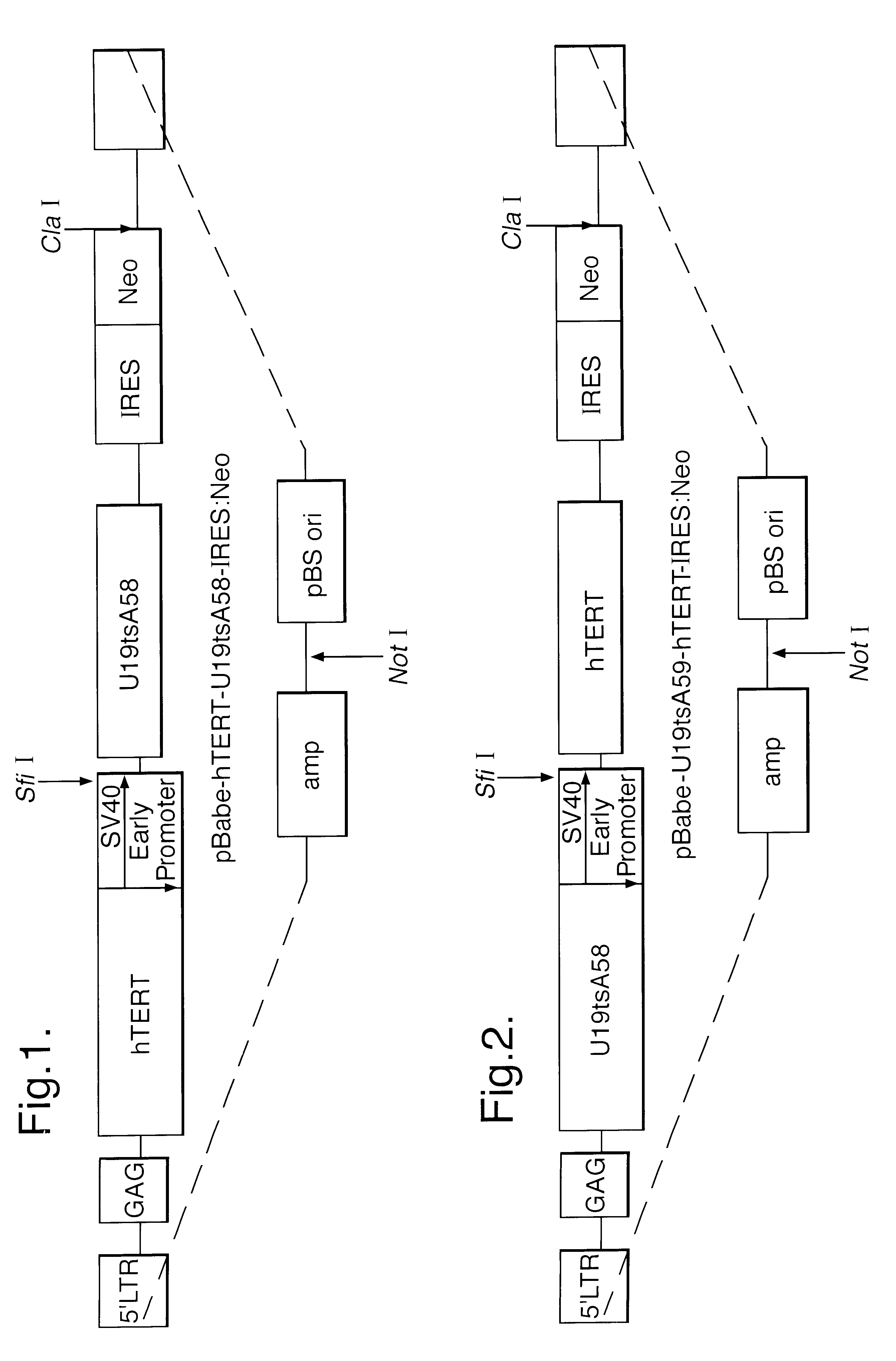Conditional immortalization of cells
a cell and conditional technology, applied in the field of conditional immortalization of cells, can solve the problems of unregulated cell division, cell death, and inability to use cells in transplantation therapy, and achieve the effect of avoiding cell death, avoiding cell death, and avoiding cell death
- Summary
- Abstract
- Description
- Claims
- Application Information
AI Technical Summary
Benefits of technology
Problems solved by technology
Method used
Image
Examples
example 1
1. Isolation of mammary interlobular fibroblasts (HMF) and mammary microvascular endothelial (MMVE) cells:
Cultures of mammary interlobular fibroblasts and mammary microvascular endothelial cells were prepared from normal breast tissue, obtained with consent from patients undergoing cosmetic surgery (reduction mammoplasty). Cultures of interlobular fibroblasts were prepared as described in Atherton et al, J. Cell Sci., 107:2931-2939, and maintained with Dulbecco's Modified Eagles medium (DMEM) supplemented with 10% fetal calf serum and antibiotics (penicillin-streptomycin). Endothelial cells from microvessels were isolated by immunomagnetic sorting of primary cultures, using the QBEND-40 mouse monoclonal antibody against thrombomodulin, essentially as described by Drake & Lock, Human Reprod., 1992; 6:1156-1159. Endothelial cultures were established and maintained in EGM-2 medium (Biowhittaker).
2. In vitro culture of cells to senescence.
As a control, preparation of cells were cultured...
example 2
This Example demonstrates the production of suitable expression vectors co-expressing thermolabile T-antigen derived from the non-DNA binding mutant of the SV40 early region (Ul9tsA58); the catalytic sub-unit hTERT of the telomerase complex (cDNA) (Counter et al., PNAS, 1998; 95 (25):14723-14728); and a dominantly-acting selectable neomycin phosphotransferase resistant marker (Neo) which encodes resistance to G418 (Clontech). The final construct was assembled in the high titre Moloney murine leukaemia virus (Mo MuLV) based retroviral expression vector, pBabe (Morgenstern and Land, Supra). The retrovirus lifecycle was used to convert the SV40 early region into viruses that make only the large T antigen. All constructs were assembled in a rec A-host (JS4-rec A-derivative of MCl061) using ampicillin selection.
Two Versions of the vector were constructed:
Construct 1
This construct is illustrated in FIG. 1. Mo MuLV LTR was used to drive hTERT, and the SV40 early promoter is used to drive b...
PUM
| Property | Measurement | Unit |
|---|---|---|
| Temperature | aaaaa | aaaaa |
| Sensitivity | aaaaa | aaaaa |
| Catalyst | aaaaa | aaaaa |
Abstract
Description
Claims
Application Information
 Login to View More
Login to View More - R&D
- Intellectual Property
- Life Sciences
- Materials
- Tech Scout
- Unparalleled Data Quality
- Higher Quality Content
- 60% Fewer Hallucinations
Browse by: Latest US Patents, China's latest patents, Technical Efficacy Thesaurus, Application Domain, Technology Topic, Popular Technical Reports.
© 2025 PatSnap. All rights reserved.Legal|Privacy policy|Modern Slavery Act Transparency Statement|Sitemap|About US| Contact US: help@patsnap.com

